Visit Next Door Sexy Girls for daily updated images of art collection
Sunday, December 17, 2006
Jerry Mathers
Labels:
50r sitcom
Visit Next Door Sexy Girls for daily updated images of art collection
Thursday, December 14, 2006
Jeremy Miller
Labels:
80s Sitcom
,Growing Pains
Visit Next Door Sexy Girls for daily updated images of art collection
Wednesday, December 13, 2006
Taran Noah Smith
Labels:
90s Sitcom
,Home Improvement
Visit Next Door Sexy Girls for daily updated images of art collection
Tuesday, December 12, 2006
Pauly Shore
Labels:
Stand-up Comedians
Visit Next Door Sexy Girls for daily updated images of art collection
Monday, October 30, 2006
Dennis Haskins
Labels:
80s Sitcom
,90s Sitcom
,Obese Celebrities
,Saved By The Bell
Visit Next Door Sexy Girls for daily updated images of art collection
Sunday, October 29, 2006
Michael Oliver
Labels:
Child Movie Star
,Firecrotch
Visit Next Door Sexy Girls for daily updated images of art collection
Thursday, October 26, 2006
Hello
Visit Next Door Sexy Girls for daily updated images of art collection
Wednesday, October 25, 2006
Index of Washed Up Celebrities
Angeles, Jack
Beckham, Brice
Berry, Chuck
Bialik, Mayim
Bonaduce, Danny
Bonsall, Brian
Brancato, Lillo
Bridges, Todd
Brissette, Tiffany
Bryan, Zachary Ty
Burke, Chris
Call, Brandon
Canseco, Jose
Carrot Top (Scott Thompson)
Clay, Andrew Dice
Coleman, Gary
Cooksey, Danny
Creel, Leanna
Culkin, Macaulay
Diamond, Dustin
- The Early Years
- 2000 - Present
- 2007 Celebrity Fit Club Source URL: https://nextdoorsexygirls.blogspot.com/2006/
Visit Next Door Sexy Girls for daily updated images of art collection
Thursday, July 27, 2006
Yakuza Tattoos
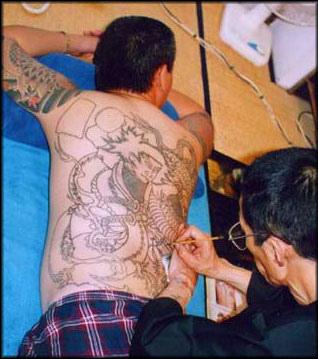
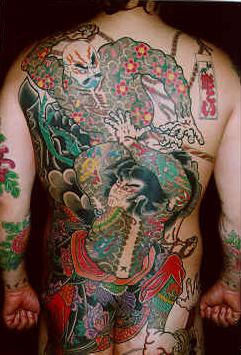
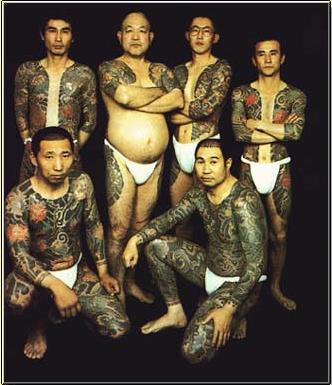

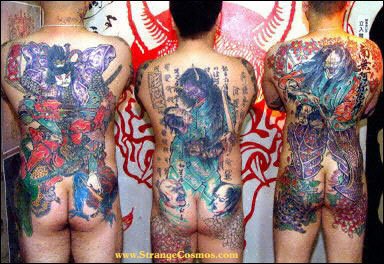
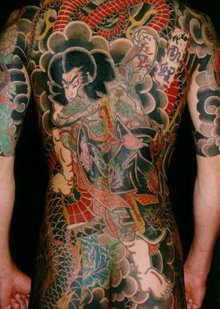
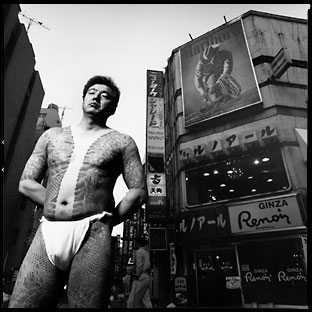
 Source URL: https://nextdoorsexygirls.blogspot.com/2006/
Source URL: https://nextdoorsexygirls.blogspot.com/2006/Visit Next Door Sexy Girls for daily updated images of art collection
Kodama – The Peace Maker
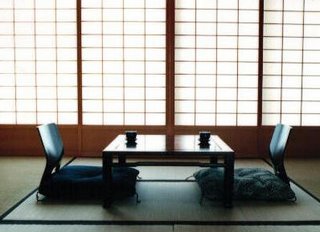 The man who brought peace between many of the yakuza factions was named Yoshio Kodama.
The man who brought peace between many of the yakuza factions was named Yoshio Kodama.Kodama was in jail for the early part of the occupation, placed in the same section as cabinet officers, military, and ultranationalists. He himself was part of the ultranationalist group Kenkoku-kai (Association of the Founding of the Nation). In the late 1930's and early 1940's he worked as an espionage agent for the Japanese government, touring East Asia. He worked on a major operation to obtain strategic materiel needed for the Japanese war effort.
By the end of the war, he had obtained the rank of rear admiral (an impressive feat at the age of thirty-four), and was advisor to the prime minister. He was rounded up with other government officials in 1946 and placed in Sugamo Prison to await trial. The occupation forces saw Kodama as a high security risk, should he ever be released, due to his fanatacism with the ultranationalists.
Kodama had made a deal with the occupation forces G-2 section, and upon his release, was working for the intelligence branch of G-2. He was the principal go-between for G-2 and the yakuza by 1950. (Kaplan, p63-9)
In the early 60's, Kodama wanted the yakuza gangs, who were now fighting one another, to join together into one giant coalition. He deplored the warfare, seeing it as a threat to anticommunist unity. He used many of his connections to secure a truce between the gangs. He made a fast alliance between Kazuo Taoka, oyabun of the Yamaguchi-gumi faction, and Hisayuki Machii, a Korean crimeboss in charge of Tosei-kai.
The alliance broke the Kanto-kai faction for good. Kodama continued to use his influence to mediate the alliance between the Inagawa-kai and its Kanto allies and Yamaguchi-gumi. The truce that Kodama had envisioned was now at hand.
Yoshio Kodama was then referred to as the Japanese underworld's visionary godfatherSource URL: https://nextdoorsexygirls.blogspot.com/2006/
Visit Next Door Sexy Girls for daily updated images of art collection
Organizations like Yakuza
America has the Mafia.
The Irish and Jews have their own crime organizations in America.
Southeast Asia has the Triads.
China, Hong Kong and Taiwan have the Tong.Source URL: https://nextdoorsexygirls.blogspot.com/2006/
Visit Next Door Sexy Girls for daily updated images of art collection
Members of yakuza organization
Their nearest boss becomes like their father and their comrades as brothers. Yakuza offers not just companionship also money, status, authority. A part of a group were you feel useful and needed. Comparing with gangs in the USA suburbs.
There is no thresholds or requirements in order to become a member. But when you are inside there are obedience to the superiors.Source URL: https://nextdoorsexygirls.blogspot.com/2006/
Visit Next Door Sexy Girls for daily updated images of art collection
Structure of Yakuza

It exists two types of yakuza, clan- yakuza and freelance yakuza.
Freelance yakuza
Freelancing yakuza is a yakuza that not commit any bigger crimes and belongs to a little group of hustlers.
They have however some difficulties to survive or not come into jail, because the clan- yakuza not allows anyone other to operate within their territories. Clan- yakuza can tip the police about crimes that the freelance yakuza haven´t commit.
If the freelance- yakuza earns to much money, the clan- yakuza kills the freelancing- yakuza or make him disappear without a trace.
A freelance- yakuza can also be used as a scapegoat if it acquires a guilty to a crime.
If a freelancer is a truly genius he can manage to begin his own clan. Usual a freelance- yakuza becomes, if they not gets killed,a member in a clan.
Visit Next Door Sexy Girls for daily updated images of art collection
Yakuza Rituals
 Yubitsume, or finger-cutting, is a form of penance or apology. If a gambler couldn't pay back a debt or something like that the persons tip of the little finger got cut off, which damage the hand and the person could not hold his sword as well as before. Also that way other people could see if a person haven't paid a debt, which could bring certain problems, since gambling always been prohibited in Japan.
Yubitsume, or finger-cutting, is a form of penance or apology. If a gambler couldn't pay back a debt or something like that the persons tip of the little finger got cut off, which damage the hand and the person could not hold his sword as well as before. Also that way other people could see if a person haven't paid a debt, which could bring certain problems, since gambling always been prohibited in Japan. Its origin stems from the traditional way of holding a Japanese sword. The bottom three fingers of each hand are used to grip the sword tightly, with the thumb and index fingers slightly loose. The removal of digits starting with the little finger moving up the hand to the index finger progressively weakens a persons sword grip. The idea is that a person with a weak sword grip then has to rely more on the group for protection — reducing individual action. In recent years, prosthetic fingertips have been developed to disguise this distinctive appearance.
This is done as an apology for disobedience. It can be done to expiate a wrongdoing but can also be done to spare one of your "children".
When you have done something that your Kumicho dislikes you take a sharp item,cut of a fingertip,wrap it in paper and send it to the Kumicho and begs for his forgiveness.If it's the first time you cut of the little- fingertip there after it becomes the next little-finger and so on.Because of that you see yakuza- members that are without several of his fingers.
 Another, more radical version of penance is seppuku (also known as hara-kiri ), ritual suicide by disembowelment. Popular among Japanese samurai and soldiers who would commit it as penance for their failures, Yakuza are sometimes known to commit seppuku as well.
Another, more radical version of penance is seppuku (also known as hara-kiri ), ritual suicide by disembowelment. Popular among Japanese samurai and soldiers who would commit it as penance for their failures, Yakuza are sometimes known to commit seppuku as well.Another prominent yakuza ritual is the sake-sharing ceremony. This is used to seal bonds of brotherhood between individual yakuza members, or between two yakuza groups. For example, in August 2005, the Godfathers Kenichi Shinoda and Kazuyoshi Kudo held a sake-sharing ceremony, sealing a new bond between their respective gangs, the Yamaguchi-gumi and the Kokusui-kai.
When yakuza members play Oicho-Kabu cards with each other, they often remove their shirts or open them up and drape them around their waists. This allows them to display their full-body tattoos to each other. This is one of the few times that yakuza members display their tattoos to others, as they normally keep them concealed in public with long-sleeved and high-necked shirts.Source URL: https://nextdoorsexygirls.blogspot.com/2006/
Visit Next Door Sexy Girls for daily updated images of art collection
Yakuza American Influence
 Yakuza became influenced by the American gangster- movies and began to dress in black suits with white shirts, black sunglasses and cropped hair
Yakuza became influenced by the American gangster- movies and began to dress in black suits with white shirts, black sunglasses and cropped hairYakuza became tougher and more violent, the swords was history, now was it firearms that counted. Now were it not just player and storekeepers that became exposed by violence, ordinary persons could be robbed and pressed on money.Source URL: https://nextdoorsexygirls.blogspot.com/2006/
Visit Next Door Sexy Girls for daily updated images of art collection
Post-War Yakuza: Gurentai
In short, a gurentai is a gang in a much more traditional sense, a group of young unruly thugs who peddle their violence for profit.Source URL: https://nextdoorsexygirls.blogspot.com/2006/
Visit Next Door Sexy Girls for daily updated images of art collection
Tekiya and Bakuto
Tekiya (peddlers)
As they began to form organisations of their own, they took over some administrative duties relating to commerce, such as stall allocation and protection of their commercial activities. For example, during Shinto festivals, these peddlers opened stalls and some members were hired to act as security. Each peddler paid rent in exchange for a stall assignment and protection during the fair.
Bakuto (gamblers)
Had a much lower social standing even than traders, as gambling was completely illegal. Many small gambling houses cropped up in abandoned temples or shrines at the edge of towns and villages all over Japan. Most of these gambling houses ran loan sharking businesses for clients, and they usually maintained their own security personnel. The places themselves, as well as the bakuto, were regarded with disdain by the society at large, and much of the undesirable image of the yakuza originates from bakuto. This includes the name "yakuza" itself.Source URL: https://nextdoorsexygirls.blogspot.com/2006/
Visit Next Door Sexy Girls for daily updated images of art collection
Yakuza Origin and history
There is no single origin for all Japanese yakuza. Rather, yakuza organizations developed from different elements of traditional Japanese society.
Kabuki-Mono
Yakuzas origin can be followed far back as to the year 1612, when men known as kabuki-mono (the crazy ones). Their odd clothing style, the distinct haircuts and bad behavior, longswords quickly got everybody's attention. They were known as masterless samurais, ronin, and several of them began to wander around in Japan as a band of robbers, plundering villages and small cities. Kabuki-mono generally came from shoguns or samurais whom during long peaceful times were forced into unemployment. Almost all yakuza have the same type of background poor, criminals and misfits. The Yakuza became a family for them. They got help with problems, got attention and could feel a certain saftey
Yakuza however not see kabuki-mono as their "ancestors" instead they feel that they are machi-yakko(City servant), Machi-yakko became the people's heroes, praised by the citizens for their help against kabuki-mono. The Machi-yakko were often weaker, far less trained and equipped than kabuki- mono. Therfore they were compared with England's Robin Hood. Kabuki-mono were known for their ruthless behavior and terrorizing all the surrounding areas. They were well known for stabbing people for pleasure. Kabukimono were gave their groups scary names and spoke in vulgar slang.
Source URL: https://nextdoorsexygirls.blogspot.com/2006/Visit Next Door Sexy Girls for daily updated images of art collection
What is Yakuza ?
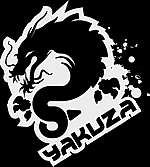
Yakuza also known as gokudō , are members of traditional organized crime groups in Japan. Today, the yakuza are one of the largest organized crime phenomena in the world. In the Western press they are sometimes called the "Japanese mafia," by analogy with other traditionally Italian-Sicilian organized crime groups of the same name.
Yakuza strength rises and falls according to the tides of Japanese society, with estimates of core membership ranging from 80,000 to more than 110,000 in the years from 1945 to 1996. Some authorities believe Japan's National Police routinely undercount the Yakuza, numbering only those names found in confiscated membership rolls, or recorded from routine police intelligence reports. Like the Sicilian Mafia and other underworld organizations, the Yakuza are formed into families.Source URL: https://nextdoorsexygirls.blogspot.com/2006/
Visit Next Door Sexy Girls for daily updated images of art collection
Wednesday, July 26, 2006
Why a blog about Yakuza ?
Visit Next Door Sexy Girls for daily updated images of art collection
Yakuza Current Activities
Even the way many Yakuza walk is markedly different from ordinary citizens. Their arrogant, wide gait is markedly different from the quiet, unassuming way many Japanese go about their business. Alternatively, they can be more conservatively dressed but when the need arises, they can flash their tattoos to indicate their affiliation. On occasion they also sport insignia pins on their lapels.
Until recently, the majority of yakuza income came from protection rackets in shopping, entertainment and red-light districts within their territory. This is mainly due to the reluctance of such businesses to seek help from the police. The Japanese police are also reluctant to interfere in internal matters in recognized communities such as shopping arcades, schools/universities, night districts and so on. In this sense, yakuza are still regarded as semi-legitimate organizations. For example, immediately after the Kobe earthquake, the Yamaguchi-gumi, whose headquarters are in Kobe, mobilised itself to provide disaster relief services (including the use of a helicopter), and this was widely reported by the media as a contrast to the much slower response by the Japanese government. For this reason, many yakuza regard their income and hustle (shinogi) as a collection of a feudal tax.
Yakuza frequently engage in a uniquely Japanese form of extortion, known as sōkaiya.In essence, this is a specialized form of protection racket.
Instead of harassing small businesses, the yakuza harasses a stockholders' meeting of a larger corporation. They simply scare the ordinary stockholder with the presence of yakuza operatives, who obtain the right to attend the meeting by a small purchase of stock. They also engage in simple blackmail, obtaining incriminating or embarrassing information about a company's practices or leaders. Once the yakuza gain a foothold in these companies, they will work for them to protect the company from having such internal scandals exposed to the public. Some companies still include payoffs as part of their annual budget.
Yakuza also have ties to the Japanese realty market and banking, through jiageya.Jiageya specialize in inducing holders of small real estate to sell their property so that estate companies can carry out much larger development plans. Japan's bubble economy of the 1980s is often blamed on real estate speculation by banking subsidiaries. After the collapse of the Japanese property bubble, a manager of a major bank in Nagoya was assassinated, and much speculation ensued about the banking industry's indirect connection to the Japanese underworld.
As a matter of principle, theft is not recognised as a legitimate activity of yakuza. This is in line with idea that their activities are semi-open; theft by definition would be a covert activity. More importantly, such an act would be considered a trespass by the community. Also, yakuza usually do not conduct the actual business operation by themselves. Core business activities such as merchandising, loan sharking or management of gambling houses are typically managed by non-yakuza members who pay protection fees for their activities.
There is much evidence of Yakuza involvement in international crime. There are many tattooed Yakuza members imprisoned in various Asian prisons for such crimes as drug trafficking and arms smuggling. In 1997 one verified Yakuza member was caught smuggling 4 kilograms of heroin into Canada. In 1999, Italian-American Mafia Bonnano family cap and enforcer, Mickey Zaffarano, was overheard talking about the profits of the pornography trade that both families could profit from. Another Yakuza racket is bringing women of other ethnicities/races, especially White/European and Asian to Japan under the lure of a glamourous position, then forcing the women into prostitution.Source URL: https://nextdoorsexygirls.blogspot.com/2006/
Visit Next Door Sexy Girls for daily updated images of art collection
Popular Posts
-
The desktop's background is one the most frequently updated and customized part of our computer, at least for most of computer users ...
-
20 Contoh Fotografi Pemandangan Alam dibawah ini dibuat dengan imaginasi yang sangat tinggi sehingga dapat membuat orang yang melihatnya san...
-
A fellow blogger just posted a review and some pics of the Juliette Lewis concert in Paris: Juliette Lewis concert in Paris . Sounds like ev...
-
Dragon Tattoo tattoo designs and ideas for By Me..... Because they are a symbol of strength and power, dragon tattoos are popular with men. ...
-
Get Pregnant Naturally - Simple Methods That Truly Works When you consider the fact that children makes up the family , it becomes important...
-
Itsu no hi ka kanaerareru ai wa kimi no soba ni aru Yakusoku nante iranai yo ne haruka hanarete ite mo Umaku ienai ya kotoba tte tayorinai n...
-
Jenna Elfman's new show, Accidentally on Purpose , premiers on Sept 21st at 8:30 pm on CBS. Here ( Jenna Elfman Interview ) you can se...
-
Now, you'll be all decked out for the beach and you'll stand out from the rest of the ordinary guys. What this means is that ...
-
There have been some recent requests for me to add a guestbook to this blog. I'm not sure how to add a guestbook to a blogger blog, so ...


